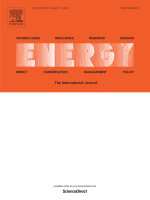
The critical importance of heat exchangers (HXs) on energy systems has been widely recognized, which can largely determine the overall efficiency. With the rise of the topology optimization (TO) and additive manufacturing techniques, it is anticipated that the TO may became a leading optimization technique in designing HX structures for the heat transfer intensification. Various algorithms for TO of HXs are dispersed in the literature, while a comprehensive and comparative review on their features, advantages, disadvantages, and limitations, is still lacking. Therefore, this paper aims at filling the literature gap by providing a comprehensive state-of-the art review on the TO for HXs over the past decades, so as to indicate the most promising technology roadmap. Each stage of the TO, i.e. the design parametrization, the heat transfer modeling, the optimization, and the final realization, is analyzed carefully in the corresponding section, highlighting the major pros, cons and challenges. Our statistics demonstrate that the current TO, though well-developed and fast improved, still have numerous limitations in handling the industrial HXs that hold the complicate structures and flow patterns. Eventually, three emerging schemes, i.e. machine learning, model order reduction, and moving morphable components, aimed to improve the efficiency of TO are also discussed.